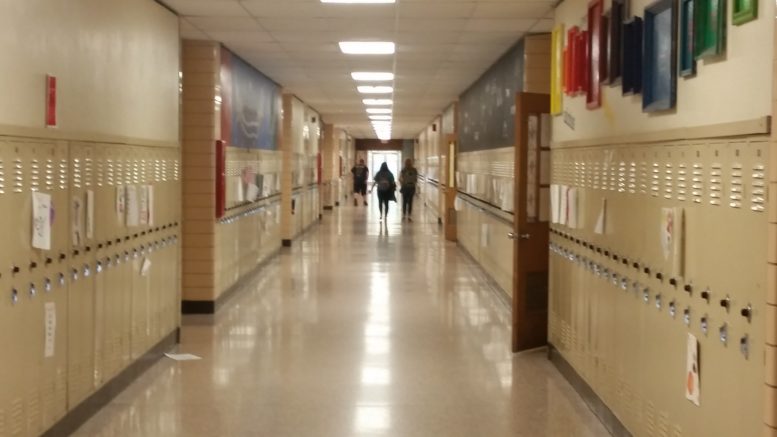By JAN LARSON McLAUGHLIN
BG Independent News
The Bowling Green Board of Education got the bad news first Tuesday evening. The latest state scores for the district looked dismal, with none of the grades meeting state standards for English or math.
That report was quickly followed up by good news about students building robots and programming computers in the STEAM (Science, Technology, Arts, Engineering and Math) program.
The pairing of the good news/bad news was intentional, according to Superintendent Francis Scruci.
“We’re going to own our score,” Scruci said about the state grades that were far from acceptable. But he wanted to make sure people also saw the great learning taking place in the district, and not put too much weight on the state scores.
“It’s reckless for a community to judge a school based on a one-day snapshot,” he said. “Please don’t judge the district based on a one-day snapshot.”
Ann McCarty, executive director of teaching and learning for BG City Schools, had the job of breaking the bad news. None of the grades met state standards for English. Aside from a middle school algebra class, none of the grades met standards for math. The district saw some success in social studies and science scores.
McCarty did not make excuses, but she did try to explain how the low scores could have happened. First, the English and math tests were new. “You will see scores drop,” when the tests change, she said. Second, the state rubrics were released after the school year had started, making it tougher on teachers. Third, the district did not have a comprehensive assessment process to monitor programs. And finally, the district didn’t find out two of its school were in the Ohio Improvement Process until later in the year.
To bring up the scores – and more importantly, improve the learning, McCarty said the district is taking several steps to:
- Identify instructional trends for at-risk groups of students.
- Create a viable curriculum for all students.
- Create Google sites as resources for teachers.
- Implement assessments for reading and math.
- Hold weekly teacher team meetings to discuss data and instruction.
“We want to focus on academic achievement,” McCarty said. “When the learning occurs, the test scores follow.”
The district’s goal is to close the achievement gap between special education and all students by no less than 3 percent each year for three consecutive years.
The gloom of the state scores was followed by the success of the STEAM program, presented by Jodi Anderson. Formerly known as STEM, the acronym changed recently when arts were added to the mix.
Anderson explained that the focus on science, technology, engineering and math began in the 1990s when it was discovered that U.S. students were lagging behind other nations in those subjects, and needed those skills to meet the needs of the nation’s workforce.
The 21st century school program teaches students critical thinking, problem solving, teamwork and innovation. Anderson gave examples of engineering projects created by various class levels in the STEAM program. One class gives students the challenge of building balsa wood bridges that will withstand weight. Last year’s winning bridge held 56.5 pounds, she said.
Other classes worked on roller coaster designs and penny hockey boards that teach the importance of precise measurements. Others worked on robotics, carbon dioxide dragsters and designing cornhole boards.
“It’s an easy way for the teacher to facilitate without giving kids the answer,” Anderson said of the creative building process.
Some students built Lego robots that are programmed with cell phones, and can act as “battle bots.”
The STEAM program recently received a grant that helped fund a new lab in the high school with a 3-D printer and provide tablets for students. The lab and tablets give students more hands-on time in the classroom.
The district also has a robotics team of middle and high school students that competes against other districts at the Stroh Center at Bowling Green State University. “It’s amazing,” Anderson said of the building full of students and their cheering parents.
Anderson also talked about the Believe in Ohio Program, which is based on entrepreneurial design. The goal is to create independent thinkers who can solve problems.
“It doesn’t matter the question. It doesn’t matter the task. If we have prepared them well, they can do it,” she said.

